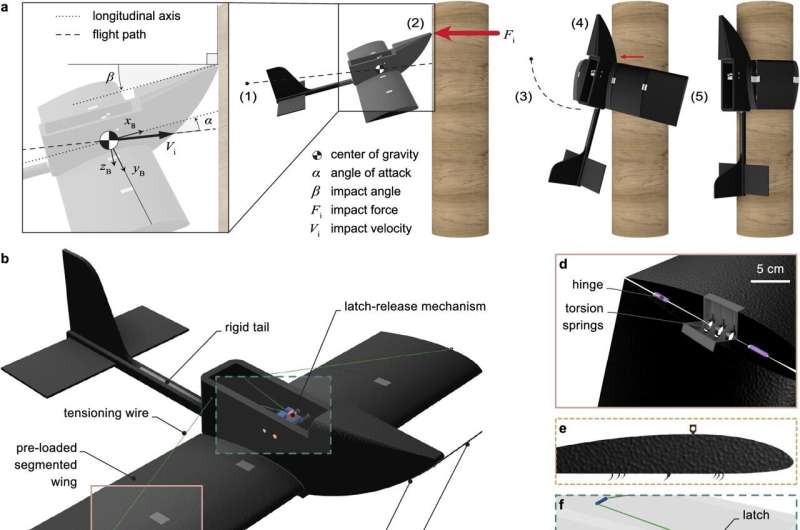July 16, 2024 report
This article has been reviewed according to Science X's editorial process and policies. Editors have highlighted the following attributes while ensuring the content's credibility:
fact-checked
peer-reviewed publication
trusted source
proofread
Giving drones wrap-and-grip wings to allow them to land on poles and tree limbs

A team of engineers and roboticists at EPFL in Switzerland has designed and built a gliding drone that can use its wings as a gripping tool to perch on a vertical object. In their project, reported in the journal Communications Engineering, the group created a drone inspired by animals such as bats that can land on vertical poles and tree limbs.
Over the past couple of decades, flying drones have proven to be a reliable means of filmmaking, reconnaissance, mapping and delivery applications. But one area where they are lacking is their inability to land on anything but a flat horizontal surface. In this new effort, the research team has developed a way to allow some drones to land on vertical tubes, poles or even tree limbs.
Prior research has shown that bats are able to land and cling to vertical poles, trees and other round, vertical objects by using their wings as grippers. The researchers also noted that in order to perform these feats, the bats must nearly crash into the object as it moves from horizontal flight to vertical flight. In response, they designed and built a robot called PercHug.
The drone built by the team has the ability to glide directly at a target, land (crash into it) and then perch by wrapping its wings around the target and clutching it.
To build it, the researchers used foldable wings, an upturned nose, a latching and unlatching mechanism, hooks, a bistable trigger and a reinforced tail.
In tests, the drone was capable of colliding with and latching onto six trees of different sizes and orientations, both with and without an extra nose piece. They noted that successful attempts included gliding to the target (after hand tossing), reorienting upon colliding, wing wrapping, latching and then maintaining its perch.
The research team noted that it took some practice for the drone throwers to become proficient at getting the drones to perch on vertical targets, with changes in target size, orientation and approach speeds needed to improve latching abilities.
More information: Mohammad Askari et al, Crash-perching on vertical poles with a hugging-wing robot, Communications Engineering (2024). DOI: 10.1038/s44172-024-00241-0
© 2024 Science X Network



















